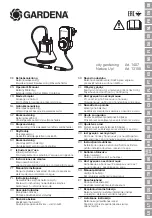
3 - 2
3-2-2 STC CIRCUIT
The STC circuit (Q1, R115, Q26, R116, C102) reduces the
sensitivity near-by the dispach line to set the immunity to air
bubbles in the sea surfaces so as to improve the image leg-
ibility.
When transmitting, the Tx trigger signal (TXTRG) from
LOGIC unit via J5 (pin 4) is high level, at this time Q26 is ON
and then Q1 turns ON. When switching TX to RX, the Tx trig-
ger signal (TXTRG) becomes low level and Q26 is OFF, and
then Q1 turns to OFF slowly by connecting time constant
(R116, C102).
Thus the STC function activates.
3-2-3 MIXER AND DETECTOR CIRCUITS
The mixer circuit converts the received signals into the 455
kHz IF signal.
The FM IF IC (IC5) contains the mixer, 455 kHz IF amplifier
and RSSI circuits.
The 200 kHz/50 kHz signals from the STC circuit (Q1) are
applied to the mixer section of IC5 (pin 16), and are mixed
with the 655 kHz/505 kHz LO signals generated at the 200
kHz/50 kHz local oscillator circuits to produce a 455 kHz IF
signal.
The 455 kHz IF signal from IC5 (pin 3) passes through the
ceramic filter (FI1), where unwanted signals are suppressed,
and is then applied to the IF amplifier section in IC5 (pin 5).
IC5 (pin 12) outputs RSSI voltage accoding to the input level
of IF amplifier section. The RSSI voltage is amplified at the
DC amplifier (IC6) to obtain necessary level, and is then
applied to the LOGIC unit.
The RSSI control signal from the LOGIC unit via J1 (pin 13)
becomes high level when the received signal is deeper than
80 m. Then the signal reduces noise by turning ON Q25 to
connect the by-pass capacitor (C90).
3-2-5 LOCAL OSCILLATOR CIRCUITS
200 kHz/50 kHz local oscillator circuits consist of IC3, X1 and
IC4, X2 respectively. IC3 or IC4 includes a frequency divider.
When high level signal is applied to pin 1, IC3 or IC4 oscil-
lates and divides frequency, when low level signal is applied
to pin 1, these IC stop the oscillation.
The local oscillator circuit oscillates a local frequency accord-
ing to the receive frequency. The oscillator frequency is 655
kHz when the receive frequency is 200 kHz since the equip-
ment IF frequency is 455 kHz. In the same way, when the
receive frequency is 50 kHz, the oscillator frequency is 505
kHz.
When Rx frequency switching signal (LOCONT) is low level,
IC3 (pin 5) outputs 655 kHz signal. When the line is high
level, IC4 (pin 5) outputs 505 kHz signal.
3-3 REGULATOR CIRCUITS
3-3-1 INPUT CIRCUIT
11–30 V DC power is applied to the MAIN unit via the PWR
connector (J3) and is then passed through the line filter (L2,
C44–C47) to SW unit (via the LOGIC unit). The line filter fil-
ters RF signals to prevent their application to the swiching
circuit.
3-3-2 SWITCH CIRCUIT
SW1 and SW2 from MAIN unit are connected to the power
switch (S1) on the SW unit passing through the LOGIC unit.
When power switch (S1) is turned ON, power voltage is
applied to the regulator circuit (MAIN unit; Q12, Q13, D18)
and the circuit activates power control circuit (IC9).
3-3-3 SWITCHING CONTROL CIRCUIT
IC9 includes an oscillator circuit and a switching control. The
oscillation frequency is 138 kHz and oscillates sawtooth
waves. The time constant circuit (R75 and C77) adjusts the
oscillation frequency.
• MIXER AND DETECTOR CIRCUITS
Mixer
16
Limiter
amp.
IF filter
455 kHz
LO signal (655 kHz or 505 kHz)
RSSI
IC5 TA31136F
12
13
14
15
IF signal from Q1
"RSSI" signal to the CPU
11
10
9
8
6
5
3
2
1
4
7
FI1
FM
detector
Содержание FP-561
Страница 1: ...SERVICE MANUAL MARINE PLOTTER SOUNDER DGPS BEACON RECEIVER ...
Страница 34: ...8 6 BOTTOM VIEW J2 J4 J5 J3 ...
Страница 38: ...8 10 BOTTOM VIEW GND RF GND J1 1 3 GND TUNE ANT V AF GND AF J2 5 1 1 J2 J1 1 to MAIN unit J1 to MAIN unit J2 ...
Страница 48: ...COVER 99 11 24 9 24 AM Page 1 ...










































